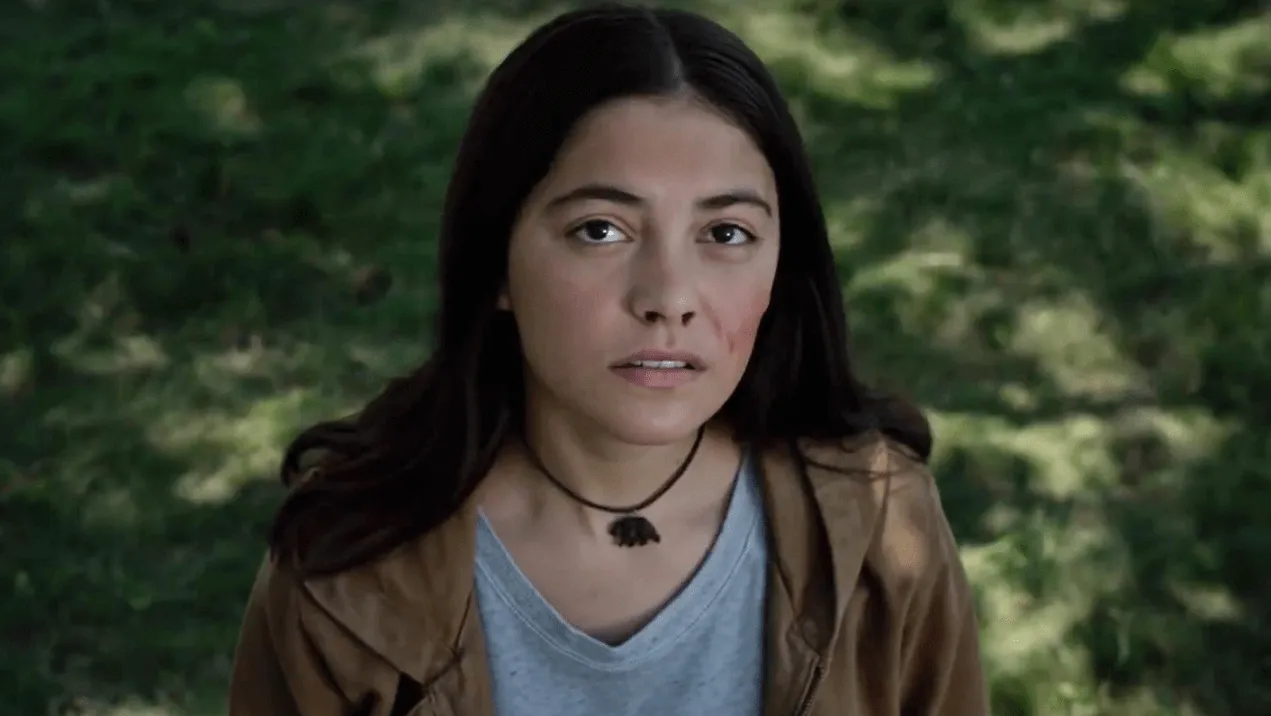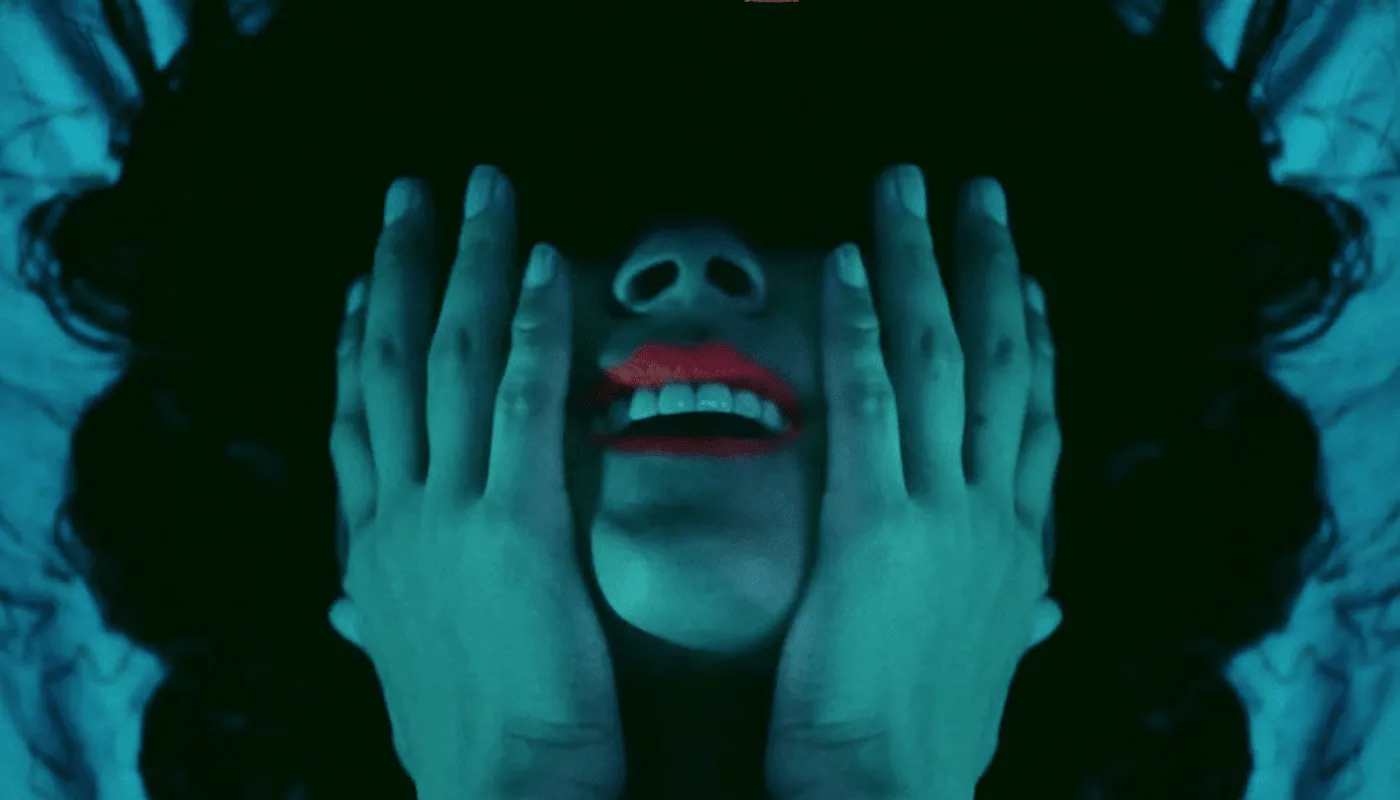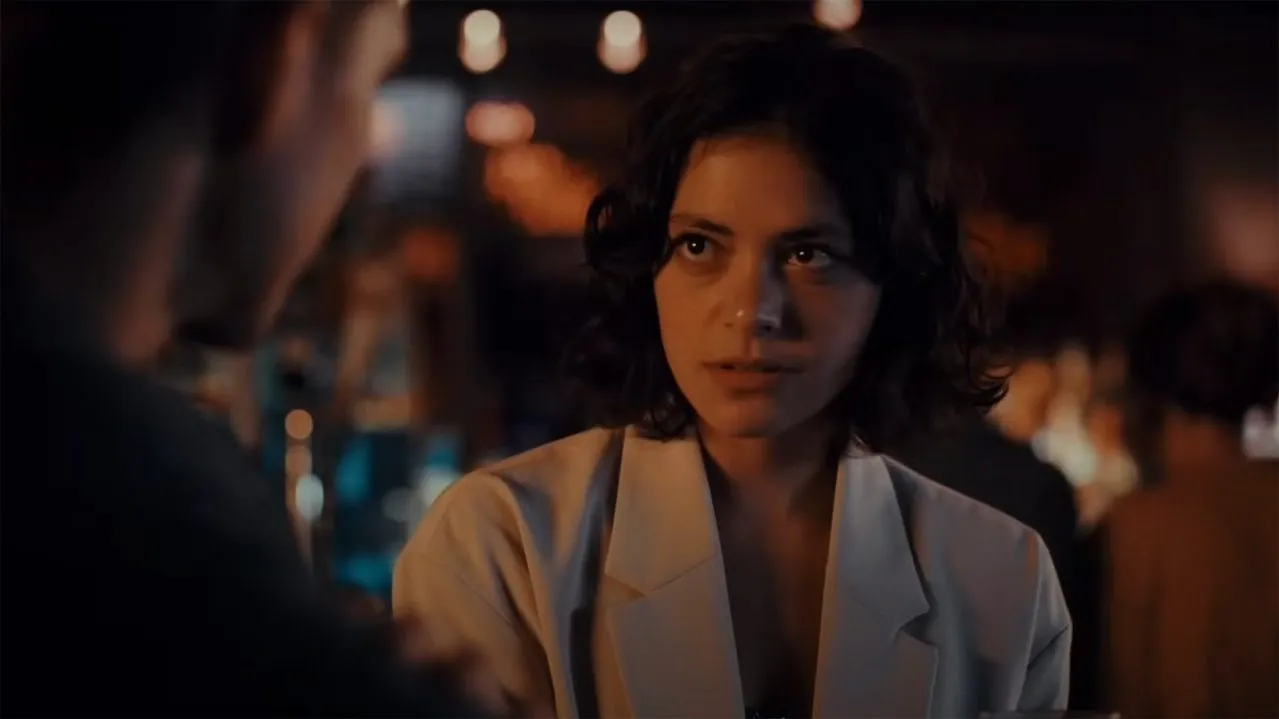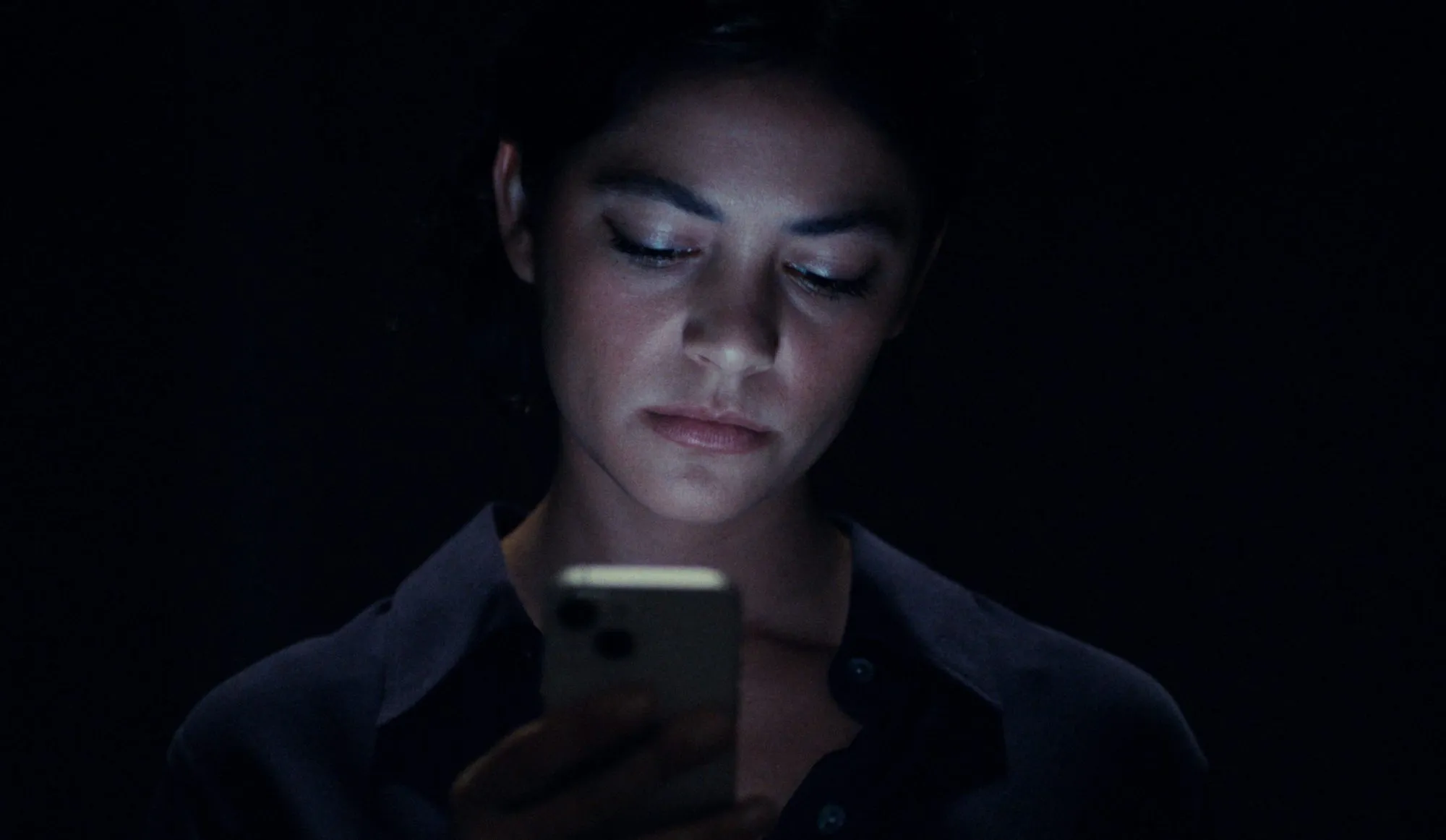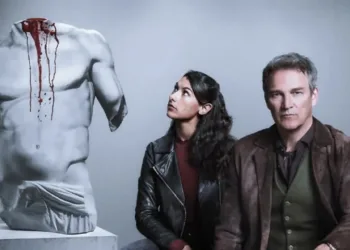The Dead Thing begins with a familiar scenario: Alex, a young woman entangled in the monotonous cycle of modern dating, scrolls through an endless stream of potential matches on dating apps, searching for genuine connection amid superficial interactions. She connects with Kyle through the “Friktion” app—an attractive prospect who initially seems perfect and quickly captivates her.
Their early exchanges buzz with chemistry and excitement, presenting the illusion of contemporary romance without emotional depth. Suddenly, Kyle disappears without explanation, transforming the narrative into something more sinister: he is actually deceased.
Los Angeles serves as a critical canvas for exploring Alex’s emotional landscape. The city embodies emptiness—its architecture of stark office spaces, cluttered living quarters, and dimly lit social venues reflects Alex’s internal void. Digital interactions promise shallow connections but ultimately fail to create meaningful relationships. As Alex becomes consumed with reconnecting to Kyle, the urban environment pulses with an underlying tension, highlighting the isolation technology creates.
The film’s narrative style experiments with temporal shifts and viewer expectations, constructing a measured tension that seeps through ordinary moments. What initially appears as a typical dating story subtly transforms into a strange exploration where romantic conventions dissolve, replaced by an unsettling encounter with mortality. The gradual metamorphosis blurs lines between contemporary drama and psychological unease, creating an experience that keeps viewers uncertain about the story’s true nature.
The Fragility of Connection: Portraits of Love and Obsession
Alex transforms from a detached office worker to an obsessive seeker of connection. Her early scenes reveal a mechanical existence, moving through work and fleeting encounters like an empty shell. Each date feels like a scripted exchange, masking a profound emotional void.
Kyle disrupts her pattern—he represents a potential escape from isolation. Blu Hunt portrays Alex with extraordinary depth, revealing fragile moments between emotional withdrawal and tentative hope. Her performance tracks a delicate shift from cold detachment to vulnerable openness, making her descent into obsession deeply moving.
Kyle emerges as a complex figure—initially charming, later revealing darker dimensions. His magnetic presence promises emotional depth, but gradually unveils a sinister core. Ben Smith-Petersen creates a character balanced between romantic allure and underlying menace. The performance exposes Kyle’s true nature: a spectral presence that manipulates Alex’s deepest vulnerabilities. His seductive exterior slowly gives way to a chilling darkness, presenting a disturbing portrait of predatory connection.
Supporting characters illuminate the film’s core themes of disconnection and modern relationship dynamics. A distant coworker and troubled flatmate underscore Alex’s emotional landscape. Their brief interactions expose the emptiness of digital-age connections, revealing how technology fragments genuine human experiences. These peripheral characters provide critical context, questioning the boundaries between authentic relationship and destructive obsession.
The Haunting of Modern Connection: Love in the Age of Distraction
“Friktion” emerges as a critical element in The Dead Thing, exposing the sterile world of digital romance. The app represents a mechanical approach to human connection, reducing relationships to quick, disposable interactions.
Screen swipes replace genuine emotional engagement, creating a landscape where intimacy becomes a fleeting transaction. Alex moves through this world like a ghost herself—present yet disconnected, searching for meaning in a system designed to prevent real contact.
Ghosting transforms from a dating experience into a supernatural metaphor. Kyle’s transition from living person to spectral presence embodies the emotional disappearance people experience in digital interactions.
He represents the phantom-like nature of contemporary relationships—appearing intense momentarily, then vanishing without explanation. The film explores how technology creates emotional distance, leaving individuals feeling hollow and unanchored.
The relationship between Alex and Kyle reveals a destructive emotional dynamic. Their connection spirals into a suffocating pattern of manipulation and desperate pursuit.
Alex chases an impossible connection, while Kyle exerts a psychological control that transcends physical boundaries. Their interaction becomes a dark exploration of emotional dependency, where individual identities dissolve into a toxic mutual obsession.
The Unseen Forces: Crafting Atmosphere Through Sight and Sound
Cinematographer Ioana Vasile crafts a visual world that amplifies psychological tension. Light becomes a narrative tool, contrasting Alex’s sterile work environment with intimate personal spaces. Office scenes burst with harsh, clinical brightness, highlighting her emotional disconnection.
Warm, low lighting in private spaces creates temporary illusions of comfort, quickly invaded by encroaching darkness. Tight camera framing and expansive urban shots trap Alex within her environment, generating visceral feelings of isolation and impending threat.
Set design transforms Los Angeles into a suffocating landscape of identical spaces. Cubicles, rental apartments, and generic bars create a numbing backdrop for human experience. Digital devices emerge as barriers, preventing genuine connection. Smartphones, earbuds, and screens symbolize the emotional distance between people, turning potential intimacy into mechanical interactions.
Sound design weaves a tapestry of psychological unease. Musical rhythms pulse like an accelerating heartbeat, tracking Alex’s spiraling emotional state. Subtle electronic murmurs and soft background noises create an unsettling atmosphere. Ambient sounds suggest hidden threats, transforming quiet moments into potential sources of terror.
Editing techniques deconstruct narrative expectations. Languid pacing suddenly gives way to sharp, disorienting cuts. Time and space fragment, mirroring Alex’s psychological breakdown. The film’s rhythm becomes unpredictable, keeping viewers suspended between moments of quiet introspection and sudden emotional violence.
Shifting Shadows: The Directorial Craft Behind the Unease
Elric Kane’s direction in The Dead Thing navigates complex emotional terrain. The film moves between romantic drama, psychological tension, and supernatural elements with remarkable precision.
Early scenes capture Alex’s disconnected romantic world, presenting a muted exploration of modern relationships. Supernatural threads emerge gradually, transforming the narrative from quiet character study to intense psychological thriller. Kane crafts each moment with careful attention, maintaining a persistent sense of unease.
The screenplay by Kane and Webb Wilcoxen builds tension through repetitive interactions. Dialogue between Alex and Kyle contains hidden layers, suggesting darker underlying currents. Seemingly casual exchanges hint at deeper psychological struggles. Conversations shift from mundane to menacing, revealing character motivations through subtle linguistic nuances.
Narrative pacing becomes a critical storytelling element. Initial scenes move slowly, reflecting Alex’s emotional numbness. Midpoint shifts create dramatic acceleration, pushing the story into more dangerous emotional spaces. This rhythmic change tracks Alex’s psychological disintegration, exposing the fragile membrane between normal experience and psychological breakdown.
The film resists genre limitations. Romantic drama, horror, and noir elements intertwine without clear boundaries. Kane and Wilcoxen use genre conventions to explore deeper themes of emotional disconnection. Digital romance emerges as a central metaphor, exposing the emptiness of contemporary relationship structures. Supernatural components illuminate the psychological isolation underlying human interactions.
Beyond the Swipe: A Haunting Hybrid of Love and Terror
The Dead Thing explores the intersection of romantic drama and supernatural horror. Romantic encounters become a canvas for exploring darker psychological landscapes.
Alex’s relationship with Kyle transforms from tender connection to dangerous obsession. Ghostly elements seep into everyday interactions, creating an atmosphere of mounting dread.
Noir-inspired visual techniques heighten the film’s emotional intensity. Shadowy lighting and intimate close-ups reveal characters’ internal struggles. Kyle’s metamorphosis from romantic partner to threatening presence builds gradually. Violent undertones emerge slowly, mirroring Alex’s psychological disintegration.
Genre boundaries dissolve as the narrative progresses. Romantic expectations collide with supernatural terror. Each scene peels back layers of human connection, exposing raw emotional vulnerabilities. Digital-era relationships become a breeding ground for psychological horror. The film excavates the thin line between intimacy and possession, challenging viewers’ understanding of emotional boundaries.
The Review
The Dead Thing
The Dead Thing is a haunting exploration of modern love, blending supernatural horror with a sharp critique of digital romance. Its seamless fusion of genres creates a deeply unsettling atmosphere, and the shifting tone mirrors the unraveling of both characters. Blu Hunt’s captivating performance anchors the emotional depth, while the eerie cinematography and score amplify the sense of dread. Though its genre-bending may not be for everyone, its complexity and emotional resonance make it a standout in contemporary horror.
PROS
- Strong performances, particularly by Blu Hunt, offering emotional depth.
- Intriguing genre fusion, blending romantic drama with supernatural horror.
- Atmospheric cinematography and effective use of lighting and sound.
- Unique exploration of modern digital romance and its alienating effects.
CONS
- Genre shifts may feel disjointed for some viewers.
- The supernatural elements may not fully satisfy fans of traditional horror.
- Some might find the pacing slow at times, particularly in the first act.









































